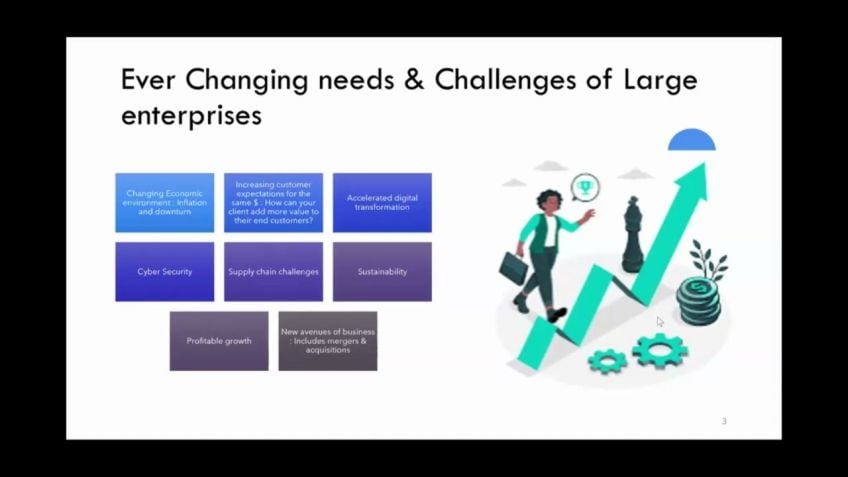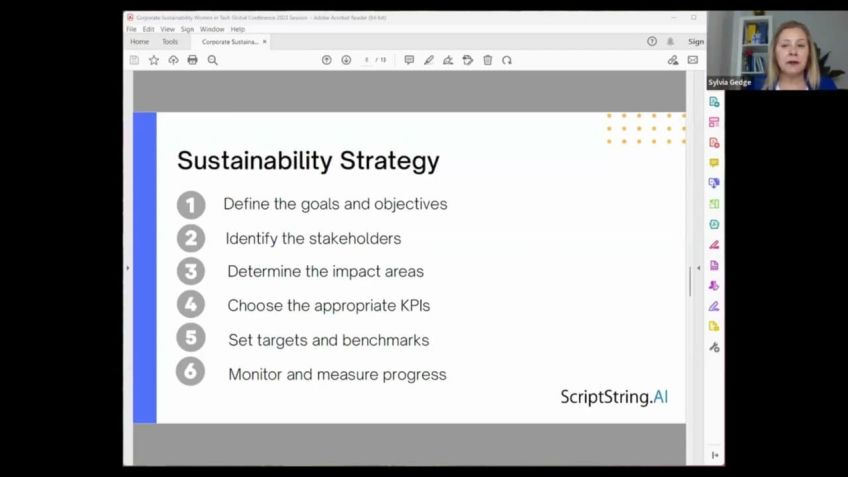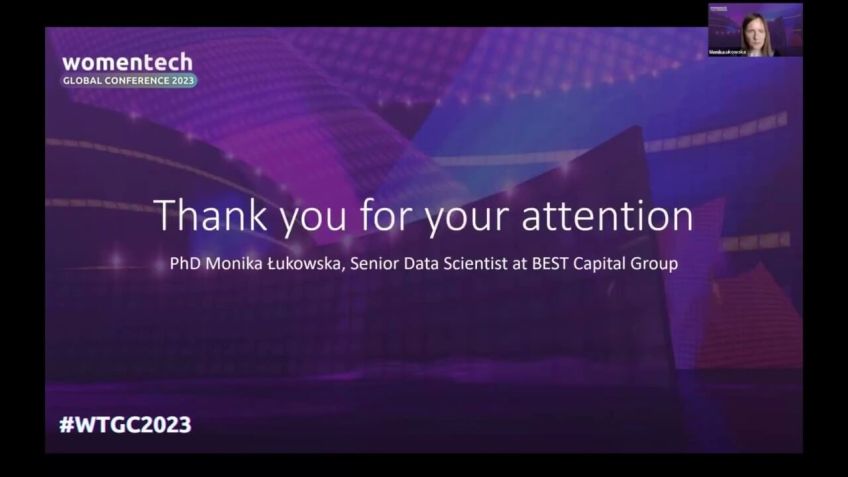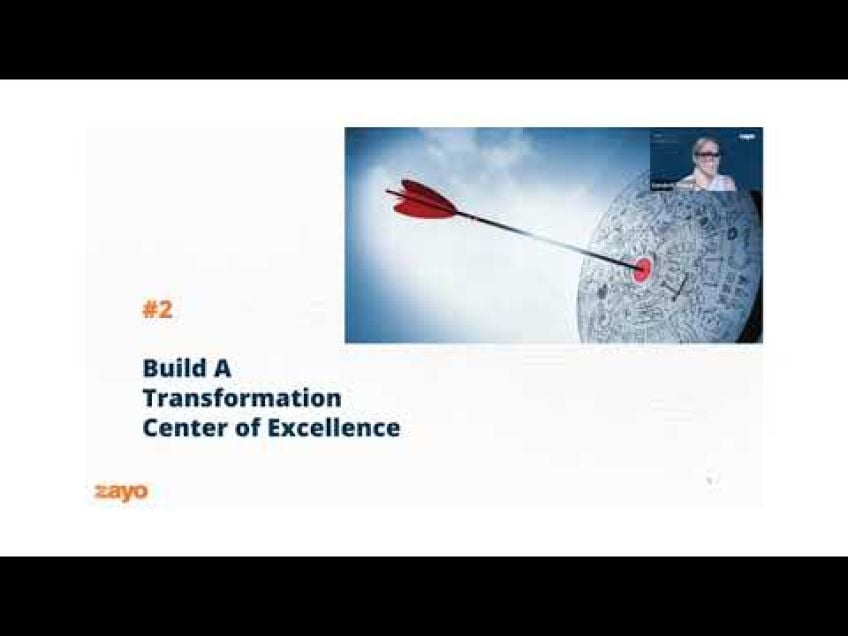Winning hearts and minds is key to successful digital transformation
Nyree Basdeo
Management ConsultantWhy Winning Hearts and Minds is Key to Successful Digital Transformation
Marie Bede, a seasoned professional with over 15 years in the tech industry, shares insights, tips, and recommendations based on her experience in managing large-scale digital transformation programs. An expert in change management and digital adoption, she underscores the importance of people's understanding, adoption, and mindset in ensuring the success of any digital transformation.
Understanding the Critical Role of People and Culture in Digital Transformation
According to Marie, the key to a truly innovative and digitally powered organization lies not just in continuously evolving technology and AI trends, but also in the mindset, behaviors, and capabilities developed by its people. However, if there is limited awareness coupled with low people adoption, benefits realization and return on investment may be compromised. Marie supports this assertion with key research facts:
- Forbes reports that 70% of digital transformations fail due to employee resistance.
- Prosci found that organizations are six times more likely to meet objectives with excellent change management.
Shaping Cultures for Effective Change Management
Culture, embedded with shared values, beliefs, and traditions, allows better understanding and communication within an organization. Marie advises that, as part of digital transformations, shaping culture to drive operational efficiencies, build enduring capabilities, and enhance business performance is crucial. She advocates including the "golden thread" of winning hearts and minds in the transformation strategy to encourage people to embrace change.
Marie highlights the three essential components of effective change transformation:
The Head
This pertains to the rational, factual drivers related to understanding why the change is necessary. This is where we convey the vision, strategic ambition, purpose, and benefits of the change.
The Heart
The emotional, qualitative drivers that instigate the desire to change. It involves connecting to what people care about, value, and understand—aided by storytelling, experiential learning, and shared success.
Habits
The skill transfer activities and behavioral changes needed to integrate into new ways of working. This includes "behavioral nudges" and "nudge theories" that help people understand how to change.
In addition to these, Marie emphasizes that organizational change requires individual change. People consistently ask: "What's in it for me?". Here, Marie introduces the Prosci ADKAR model:
- Awareness: All impacted stakeholders should be aware of why the change is necessary.
- Desire: All stakeholders should actively support the change.
- Knowledge: Stakeholders need a deep understanding of the change process and its goals.
- Ability: The stakeholders should effortlessly realize and implement the change at the required performance level.
- Reinforcement: The change should be reinforced for adoption, which is crucial to sustain the change.
Creating a Tailored Digital Change Strategy
Marie suggests developing a customized digital change strategy that aligns with the desired program outcomes and fits within organizational contexts and cultural traits. This strategy should consider aspects like the digital maturity of the organization and potential people-related risks that could derail the transformation.
Key Considerations For Successful Change Management
- Establish the vision as a North star.
- Engage senior leaders as active and visible sponsors of the change.
- Create a change network across impacted stakeholder groups.
- Encourage participation and co-creation.
- Enable desired ways of working.
- Leverage human and data insights.
- Share success stories.
Utilizing Various Frameworks and Toolkits
Additinally, various frameworks and toolkits can be used to measure return on investment. These tools can be used to understand different stakeholder needs and assess readiness for change, communication, and engagement strategies, along with training and learning methods.
Change management plays a vital role in the realization of benefits and return on investment in digital transformation programs. Its well-crafted implementation can ensure the winning of hearts and minds, which Marie believes is the heart of digital transformation success.
For deeper insights and more information, you can connect with Marie Bede on Linkedin.
Video Transcription
Hi, everyone. So my name is Marie Bede and I'm going to be talking to you about why winning hearts and minds is key to successful digital transformation.Um And over the next 10 minutes, I'll share some insights, um things to watch out for and some top tips and recommendations um based on my experience. So firstly, a bit about myself. So I've worked within the tech industry for about 15 plus years and I'm a management consultant at a company called P A consulting. Um I am a pro I certified change management practitioner and digital adoption specialist. And this means that I manage the people, aspects of change associated with complex and large scale digital transformation programs. So ultimately, we all know that technology data and A I are continually evolving and trends are constantly changing. Um But ultimately, for organizations to be truly innovative and reap the benefits of a digital workplace, they really must focus on the mindset behaviors and capabilities needed for its people to work successfully in a digital organization. Um I always say that you can develop the best technical solution.
But you know, if there's limited awareness, if there's low people adoption, then there'll be a real lack of benefits, realization and very limited um return on your investment. And there's a couple of key facts to support this. So research conducted by Forbes found that 70% of digital transformations usually fail due to employee resistance um and research conducted by pro I found that organizations are six times more likely to meet objectives with excellent change management. Now, obviously, my role I know firsthand that excellent change management really provides kind of the structure, the tools best practice and also the encouragement that really helps people adopt new ways of thinking and operating. And this in turn drives successful completion of complex challenging projects.
And then when we look at the cultural aspect, we know that culture provides us with shared values, beliefs and traditions that allow us to better understand and communicate with each other. And part of this transformation will likely involve shaping culture to drive operational efficiencies and build during capabilities and thus increasing business performance. And this is why I always say the golden threat of winning hearts and minds really needs to be weaved into the change strategy as people embark on this transformation journey so that they really start to embrace the change. Um You know, it's really important to gain, buy in commitment and also minimize resistance and agility and flexibility are essential um to doing this. But to achieve that you really need to get good at change. Um And the foundational pillar for people adoption is ensuring that people understand kind of what the change is about. So when we talk about the head, we talk about factual, rational and drivers. So this is where people say, you know, I understand why I should change. Um And this is where we communicate things like the case for change, you know, based on what people want to know, reinforcing the why, you know, what's the vision, what's the strategic ambition and what's the purpose and the benefits along the journey?
And then we look at the halt. So the emotional kind of qualitative drivers, you know, I want to change, I have a desire to change. Um And this is about connecting to what people care about and value. So helping people understand, you know, through storytelling, experiential learning, um different sorts of experiences, but also kind of sharing success. And then the third component of this is also habits. So you'll hear things like behavioral nudges and things like nudge theories.
And this is where we talk about, you know, people say I know how to change. And this is focused on the skill transfer activities by embedding to thy behaviors through kind of systematic interventions to integrate into new ways of working. Now, alongside this organizational change requires individual change.
People will always say what's in it for me, what's the benefit to me? And this is where I look at using the Prosy Adar model. Um One component of this a for awareness. So you know, all impacted stakeholders must be made aware of the change and the business reasons for it. Um the desire, so all stakeholders should have the desire to participate and fully support the change knowledge. So all stakeholders should have a thorough understanding of the change and the process and its ultimate objectives ability. So stakeholders should have the ability to realize and implement change at the required performance level and then there's the reinforcement. So it takes time for some people to adopt change and reinforcement of benefits. Or you know, two people is quite key to sustaining this. It's therefore important to develop a tailored digital change strategy that sets out the journey to success um by designing a very, you know, targeted and bespoke approach based on the desired program outcomes. But that's also guided by, you know, the organizational context, cultural traits shows nature strengths and where there are opportunities um to kind of leverage this and to ensure that an effective change journey um is creating value. I recommend that you focus on the people.
So providing robust governance to ensure alignment and to kind of bring people on the change journey, being quite agile iterative and so learning as you go, having an adaptive approach um and establishing success measures and metrics early. So you need to have a clear vision and define what success actually looks like and how you're going to measure it. Another thing to consider is the digital maturity of the people and the organization. So I've worked as an organization that wanted to improve the way they collaborate.
So, you know, their focus was on MS teams and enhancing the functionality with that. And you know, the other extreme was an organization who wanted to develop an A I solution um to enhance the way they work. So those different maturity levels and critical to this mitigating any people related risks um that have the potential to derail this transformation. So, you know, they may be colleague resistance as employees, you know, may find the change uh challenging due to the habits they have developed over time.
Um Another example is change fatigue. So if you've got lots of different changes happening at the same time, people, you know, it's very overwhelming. Um thinking about things like geographical nuances, misaligned leadership expectations, lack of commitment, you know, people are quite complex.
So there's a lot going on there which you need to understand. So key considerations I would say is establish the vision to provide a North star engage senior uh leaders as active and visible sponsors of the change. So research has found that people like to receive important messages from their leaders and line managers, creating a change network across impacted stakeholder groups. So you have ambassadors um empowering people through co creation and participation. So things like experiential learning, knowledge sharing, um enabling desired ways of working that connect like human ingenuity to the digital solution, um leveraging both human and data insights um and encourage unconstrained thinking. So this um concept of idea in a vote create and also um very important to uh share success stories kind of along the journey. And as a change management team, um you know, there's various frameworks and toolkits are put in place. So there's different ways of measuring your return on investment. So there could be, you know, program score card adoption KPIS business value um through your stakeholder analysis. So people have different engagement needs. So we tend to develop personas. So, you know, it could be that people are on the go and are quite digital savvy. So they can access information quite easily and they know how to do that.
Whereas other people who are in the field, um you know, there could be an aging workforce where we then need to think about unlocking tacit knowledge. So there's a few considerations there and we also look at change readiness. So program people process tech and data, what key things need to happen to get people ready for the change, um you know, communications and engagement. So, you know, people need to access the right information at the right time via the right channel training and learning. And the key thing is that, you know, um change doesn't stop at cut over and go live. You know, we need to drive adoption and embedding the solution beyond that point as well. So I think in summary, the foundational pillar for adoption is ensuring people understand what the change is about and reinforce the y vision of benefits drive engagement. Both top down through leadership and bottom up through those on the ground, connect to what people care about and value.
So help people understand through storytelling, experiential learning and sharing success. Develop the ethos of idea to info to create, to see how data algorithms A I open up new opportunities, enable desired ways of working that empower people enable agility and connect human ingenuity to the digital solution.
And on a final note, um change management directly supports benefits realization project return on investment. So really try to factor it into your digital transformation program so you can really win hearts and minds. Um And there's a lot to unpack there. So feel free to connect with me via linkedin. If you want to know more about this.






